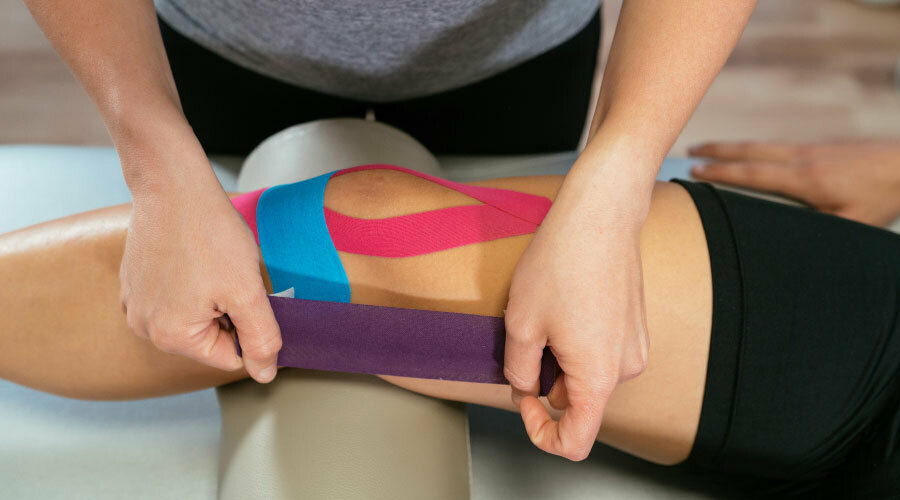
Recovering from a knee injury can be a challenging journey, but with physical therapy, you can quickly regain strength, mobility, and confidence. At Access Sports Medicine, we understand the importance of a personalized rehabilitation plan that fits your unique goals. Not sure what to expect during physical therapy for a knee injury? Let’s review the steps and phases that will help get you back to the activities you love most.
Initial Assessment
The first step in physical therapy for a knee injury is a comprehensive assessment by one of our licensed physical therapists. During this initial visit, the therapist will evaluate your knee’s range of motion, strength, swelling, and pain levels, and any changes to balance, walking function and safety. This assessment helps us create a personalized treatment plan specific to your needs and goals.
Phase 1: Reducing Pain and Swelling
In the early stages of recovery, the primary focus is to reduce pain and swelling. We may use various techniques to do so, such as:
- Cold Therapy: Applying ice packs to decrease inflammation.
- Compression: Using bandages or sleeves to control swelling.
- Elevation: Encouraging you to keep the knee elevated to reduce fluid accumulation.
- Manual Therapy: Gentle massage and mobilization to alleviate pain.
Phase 2: Restoring Range of Motion
The next phase of care involves restoring the knee’s range of motion. Exercises during this phase might include:
- Passive Stretching: Assisted movements to gently stretch the knee.
- Active Range of Motion Exercises: Encouraging you to move the knee within a pain-free range.
- Flexibility Exercises: Targeting surrounding muscles like the quadriceps and hamstrings.
Phase 3: Strengthening the Muscles Around the Knee
Strengthening the muscles around the knee is essential to support the joint and prevent future injuries. Common exercises include:
- Quadriceps Strengthening: Leg raises, mini-squats, and stepping drills.
- Hamstring Strengthening: Hamstring isometrics, curls, and functional movements
- Calf Raises: Strengthening the lower leg muscles.
Your therapist will gradually increase the intensity and resistance of these exercises as you progress.
Phase 4: Functional Training for Athletes
Functional training prepares you for daily activities and, if applicable, sports-specific movements. This phase includes:
- Balance and Proprioception Exercises: Such as standing on one leg on firm and foam surfaces or using a balance board or BOSU.
- Agility Drills: For athletes, incorporating movements like side steps and pivots.
- Endurance Training: Increasing cardiovascular fitness with low-impact exercises like cycling or swimming.
Timeline for Recovery
The timeline for recovery from a knee injury varies depending on the severity of the injury and the individual’s response to therapy. Generally, patients can expect:
- Mild Injuries: 4-6 weeks of physical therapy.
- Moderate Injuries: 8-12 weeks of therapy.
- Severe Injuries or Post-Surgery: Several months of rehabilitation.
Your physical therapist will monitor your progress and adjust your treatment plan as needed.
How Access Sports Medicine Can Help
Our team of experienced physical therapists is dedicated to helping you recover from your knee injury effectively and safely. We provide personalized care plans that address your unique needs, ensuring that you regain strength, mobility, and confidence in your knee. Our state-of-the-art facility and evidence-based techniques set the foundation for a successful recovery journey.
If you’re dealing with a knee injury, don’t hesitate to contact Access Sports Medicine. We’re here to support you every step of the way toward a healthier, more active life.


